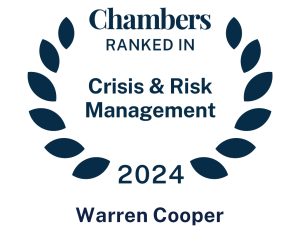Mitigating reputation risk has been a bank board buzzword and a key concern of directors for years. Most banks have adopted a formal communications plan that features public-facing communications strategies for robberies, natural disasters, allegations of malfeasance, HR challenges, and anything else leadership might consider a crisis.
These plans focus on external audiences: the public, financial and traditional media, shareholders, regulators, etc. Of course, this makes sense. The wide world is asking questions, scrutinizing the bank’s handling of the matter and seeking to understand how it might impact share price, customer and/or investor relations, regulatory oversight, employee recruitment, or other outward-facing concerns.
But too often bank leadership underestimates the critical role of internal communications, messaging about the situation aimed at employees and other insiders. Insiders are typically in-the-know. They can support and amplify external messaging and make leadership look good.
But internal audiences can just as easily cause reputational chaos by undermining that messaging if they feel ignored, disrespected, or lied to.
A key principle of effective crisis communications is consistency. Internal and external communications don’t have to be identical, but they can’t contradict one another. In fact, inconsistent messaging can occasionally have the impact of an intentional coverup. Reputational harm is virtually guaranteed when conflicting messaging itself becomes the focus of unwanted media scrutiny and public outrage.
Public-facing statements that conflict with internal messaging (or run counter to the experience of internal audiences) can undermine leadership’s authority, decimate morale, increase resentment, and seriously compromise the bank’s reputation and brand. They can lead to poor rankings on Indeed, Glassdoor and other popular business rating websites, which can then impact employee retention and recruitment. Importantly, they can reflect negatively on leadership, including directors, leading to questions about whether the latter take seriously their oversight and fiduciary responsibilities.
Executives frequently feel pressured to downplay inconvenient truths in order to protect shareholder value as well as customer and public confidence. Occasionally, that pressure leads to a decision to publicly represent a situation in a way known by employees to be untrue. Some examples: a) the board characterizes a suddenly announced leadership change as having been long planned when insiders know it resulted from allegations of improper behavior, b) established guidelines skirted to approve a sketchy loan to a principal are revealed by a whistleblower, c) a cyberattack that blocks customer access to account information is publicly said to be a software glitch, though a ransomware notice appeared on employees’ computers moments before the system shut down.
The truth, as they say, will out… and typically it will be an insider who outs it.
Several years ago, a prominent northeast bank was sued by a Black female employee who claimed the bank failed to protect her from an assault by a white male wealth management customer known to have a history of harassing black female employees. The bank’s lawyers challenged that claim and initially sought to discredit the employee. When the jury was made aware of similar complaints by other female staff over the years it awarded the employee $2.4M in compensatory damages.
Here are five things bank executives can do to help avoid reputational harm.
Insist that public-facing statements be consistent with internal memos. Nothing will compromise the bank’s crisis communications strategy faster than the discovery of an internal memo that contradicts it. Make no mistake, those internal messages will be shared with the media, especially when employees (or shareholders) are unhappy.
Insist that Legal and PR are aligned on the messaging. Legal counsel should sign off on all public-facing statements and releases prior to their use. This reduces the likelihood such statements could compromise a future litigation strategy should the situation lead to a lawsuit.
Insist all media exchanges be written. First, resist any request for board leadership to sit for a live media interview. Instead, require the reporter to submit questions in writing – for a written response. That allows for carefully crafted answers. Second, remember that a media inquiry is not a deposition. It’s okay to answer some questions and ignore others without having to say, “No Comment.” Third, if the decision is made to address a question, concisely answer only what’s exactly being asked. Don’t elaborate. Fourth, be succinct. Reporters can only use what they’re given. Longer, more involved responses are invitations to the reporter to pick and choose content to fit an editorial narrative.
Establish a clear chain of communications. Most banks have a communications team that responds to media inquiries. Few have an media inquiry escalation protocol that shares the team’s contact information across the organization. Everyone from the janitor to the board chair should know how to appropriately escalate media inquiries. Most employees don’t want to speak to the media, and they’ll be relieved to be able to properly hand off the inquiry. Make sure everyone has exact language to use in their response (no freelancing!). For example, when contacted by a reporter they can say, “I want you to get accurate information. Give me your email and I’ll have the right person get back to you.”
Don’t answer calls from unfamiliar numbers. Bank directors and C-Suite leadership should assume a reporter will find their private cellphone number, even if they haven’t shared it. Letting all unrecognized calls go to voicemail helps prevent being caught off-guard and forced to either abruptly hang up or respond off-the-cuff. The voice message can be passed along to the appropriate person without ever speaking with the caller. By the way, any response, especially, “No Comment,” will likely become part of the reporter’s coverage. (And every reader believes “No Comment” means “They’re guilty.”) If you comment, and then say, “This is off-the-record, right?”, the answer is “No.”
Of course, these guidelines are most effective when integrated into a more comprehensive crisis communications plan. But even as a set of standalones, they can help executives protect the bank’s reputation — and their own.
Warren Cooper is senior director at Kessler PR Group, a public relations firm specializing in crisis and strategic communications consulting services for Fortune 500 companies, colleges and universities, hospitals and health systems, law firms, banks, governments, religious institutions, arts organizations and other high-profile clients. A former journalist, businessman and NJ mayor, Cooper earned a PhD in psychology from Rutgers University.










